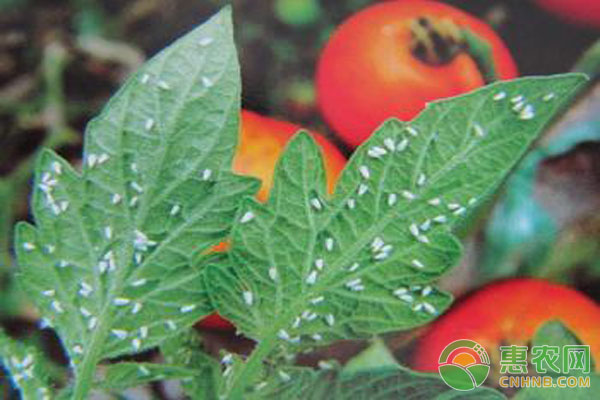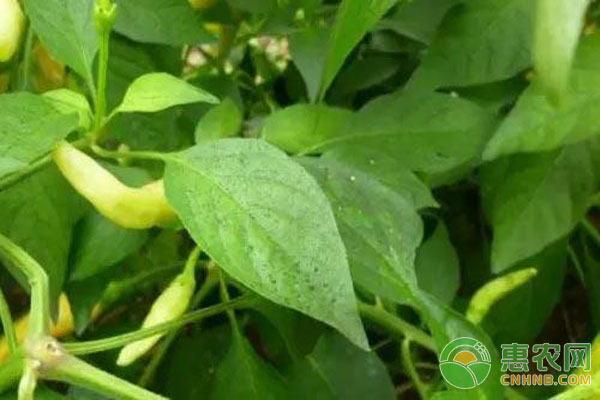Whitefly, also known as the white moth, is a worldwide pest that is harmful to many plants such as vegetables, fruit trees, herbs, and pasture. Generally, it can cause losses of 10% to 30% or more, and severe cases can be as high as 70% or more. On vegetables, peppers, cucumbers, tomatoes, etc. are more seriously affected.
First, the harm and occurrence of whitefly
The activity temperature of adult whitefly is 22 °C ~ 30 °C, and the temperature of reproduction is 18 °C ~ 21 °C. It has the characteristics of tenderness, yellowing and lightening. Adults and weak insects all like to cluster on the back of the plant leaves, so that the sucking mouth can absorb the plant juice, so that the damaged leaves are chlorotic, yellow, wilting, and even the whole plant is dead. It also secretes a lot of honey liquid, polluting the foliage and fruit surface, causing coal pollution. It is also a medium of transmission for viral diseases.
There are two key periods in the year: one is spring, the greenhouse is in the mouth, the time is from mid-April to May, and the other is in the autumn, which occurs in greenhouses, cold sheds, open fields and other facilities. From the end of July to September, the greenhouse will continue until the end of November.

Second, the reasons for the difficulty in prevention and control of whitefly
1, more breeding sites
With the continuous expansion of greenhouses, greenhouses, and open field vegetables, whitefly has enough food and breeding sites throughout the year.
2, high reproductive index
More than 10 generations can occur each year in the northern greenhouse. The developmental time of each generation is shortened with increasing temperature. It takes 31.5 days for generation at 18 °C; 24.7 days at 24 °C; and 22.8 days at 27 °C. The developmental stages of each insect state at 24 °C were: 7 days in egg stage, 5 days in 1st instar, 2 days in 2nd instar, 3rd in 3rd instar, and 8d in pseudoprine.
When the average temperature of the shed is 19 °C, the generation is about 30 days, and the number of eggs laid per female is as high as 3000-4000. After 1 generation, the population can increase by 140-150 times. The number of reproduction increases exponentially. Medium is rare.
3. Many types of harmful vegetables
There are more than 200 host plants of whitefly. Among the vegetable crops, there are mainly cucumber, zucchini, pumpkin, and melon. Eggplant crops such as eggplant, tomato, and pepper, cruciferous crops such as cabbage, white raisins, and radishes; legumes such as kidney beans and lentils; and various crops such as lettuce, Jerusalem artichoke, potato, and leeks.
4, four insect state distribution
Adult whitefly can fly in a short distance, the surface of the cloth wax on the back of the young leaves of the plant, and lay eggs on the young leaves.
As the plants grow, the adults continue to transfer to the upper leaves, and the insects form a certain pattern on the plants: the uppermost leaves, the most yellow and yellow eggs, and the lower ones are mostly black. Eggs, and the lower part are mostly nymphs of the first age, then the middle nymphs, and the lower part is 蛹.

Adults, nymphs, eggs, and cockroaches are distributed from top to bottom. The general medicine can only kill adult worms. It is difficult to kill eggs and larvae. The number of medications cannot keep up with the speed of reproduction, so it is more difficult to treat.
5, prevention and treatment awareness is weak, re-treatment and light defense
After the vegetables are planted, the young leaves are the best food for the whitefly pests. Some farmers have a weak sense of using insect nets, there is no hole to make up, there is a gap, and even after planting, vegetables start to grow. After using the whitefly, the insect net is used, which is very bad for controlling the whitefly.
6, drug selection problem
Some medicines only kill adult insects and do not kill eggs, which leads to the continuous growth of eggs after hatching; some medicines only kill eggs without killing adults, causing adults to continue to lay eggs, and the eggs continue to hatch after hatching. We usually use such agents, imidacloprid, acetamiprid, nitenpyram, pymetrozine, thiamethoxam, these agents are adult treatment, so after a large adult drug will die, but the other three Insect eggs, nymphs and mites do not work well.
Third, vegetables whitefly control strategies
1, crop rotation
The kind of open-air vegetable or greenhouse Greenhouse Autumn and Winter around should choose leek, celery, garland chrysanthemum, spinach, rape, garlic and other whitefly does not like eating vegetables Levin, both against this pest infestation, but also effectively prevent the greenhouse spread.
2, to eradicate insect
Before planting, the residual leaves and weeds of the former crops were cleaned and buried deep or burned outside the field; during the growth of the vegetables, the pruning was strengthened, and the dead yellow leaves and diseased leaves were removed and brought to the outside of the shed for burning. During the summer off-season period, high temperature suffocation can effectively eliminate the whitefly in the shed.
After sowing, 25% of the vegetables can be simmered and smouldering with wood chips, and ventilated for 8-10 hours. An insect-repellent net is set on the seedbed or in the greenhouse vent to prevent foreign insects from moving in. The insect net is preferably 40-60 mesh.
3, booby-traps and repellents
Whitefly has a strong tendency to yellow, and in the early stage, yellow sticky insect boards can be set in the greenhouse to trap adults. In winter and spring, a yellow plate is placed in combination with a reflective curtain in the greenhouse to repel the whitefly and increase the light on the plant.
4. Biological control
When the average adult of the white-skinned whitefly has 0.5 to 1 head per plant, the artificially propagated Lizard wasps are released, and each plant releases 3 to 5 heads of adult bee or black cockroaches, and is placed once every 10 days. Released a total of 3 to 4 times. The control of whitefly is good. It is also possible to artificially release the grasshopper, and the average of one grasshopper can prey on 172.6 heads of whitefly larvae. In the conditioned areas, it can also be used to control whitefly.

5, chemical control
In the early stage of the occurrence of whitefly, the drug is administered in time, that is, when the average number of adults per plant is 2 to 3, especially in the stage of "spotting". The spraying time is best when the morning dew is not dry. In the middle and afternoon, the white powder is dry and easy to fly, and it is not easy to spray onto the body.
It is recommended to follow two aspects of the spray:
First, different insecticides with different mechanisms of action are selected, such as nicotine insecticides such as imidacloprid, acetamiprid, nitenpyram, and benzimidamide of pyridinamide, or pyridone of pyridine.
Second, in order to prevent and control adults and nymphs at the same time, it is recommended to use the above-mentioned insecticides and spirotetramat or pyridone, and the adult nymphs are simultaneously controlled.
In the case of serious resistance to pests, it is not recommended to try mineral oil. The test shows that some mineral oils have high activity on whitefly. The above suggestions are for your reference. For more details, please pay attention to the Hui Nong School.
Nutritional Supplements,Gummies Nutritional Supplement,Sports Nutrition Supplement,Health Care Nutrition Supplements
Allied Extracts Solutions , https://www.alliedbiosolutions.com